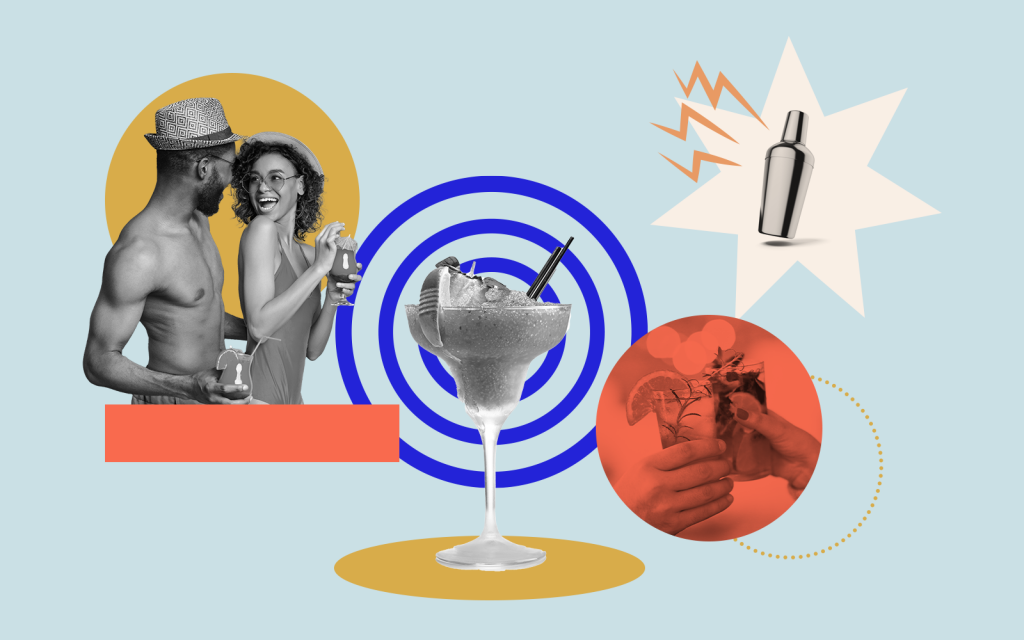
It’s a Party in the Nonalcoholic Drink Space. Your CPG Brand Better RSVP.
October 27, 2021
Millenials have already been blamed for “ruining” food and bev products like light yogurt, cereal, and even the Big Mac. Now they’re coming for alcohol — and Gen-Z is backing the battle. That’s right. These younger generations are challenging the notion that social gatherings have to come with a hangover.
So is there any wonder why the no-and-low-alcohol (NOLO for short) category is booming? Sales jumped by more than 30% in 2020 alone!
The trend goes beyond millennials and Gen-Zers, too. The pandemic’s threat to our health converted many people into sober curious NOLO consumers and further buoyed the category’s growth. And let’s not forget the general trend toward wellness, which is surely playing a role in the rise of nonalcoholic drinks.
What does this mean for innovation managers like you? You better start exploring the NOLO category so you can leverage the trend while it’s on the upswing — before another CPG brand takes your idea. Oh, and even if you’re not a typical beverage brand, you can learn from this category and apply it to innovations of your own.
That’s why we tasted and reviewed 13 popular nonalcoholic brands for you. Take a look at the landscape. It just might inspire your next big idea.
Breaking Down the Top Nonalcoholic Drink Brands for the Sober Curious
Our deep dive into this space revealed three main groups of nonalcoholic beverages:
- Adaptogenic
- Booze-mimicking
- Other alcohol alternatives
Let’s explore the brands and innovations making waves in each of these three groups.
1. Adaptogenic Brands Alter Consumers’ States without the Hangover
It’s no secret adaptogens — herbs and mushrooms that claim to alter, nourish, and strengthen our bodies and minds — are “in” right now. CBD, ashwagandha, ginseng, and reishi are just a few of the hottest plant-based ingredients showing up in everything from juices to gummies.
Unsurprisingly, adaptogens are also found in many nonalcoholic beverages. The brands in this particular group of drinks claim their products alter consumers’ states and offer health benefits. Adaptogen drink sippers might feel more at ease, sociable, and connected — as if they had a glass of red wine, but without the morning headache.
Here are the adaptogenic nonalcoholic brands we sampled:
We genuinely enjoyed all of these brands. Each has a premium vibe (perfect for brand-focused millennials and Gen-Z), great flavor profile, and commendable branding and packaging.
If we had to pick an overall winner, it would be Curious Elixirs. The flavors are complex and robust; there’s a new note in each sip. Not to mention the slight edge that makes them a worthy alcohol alternative. The only issue? The products are numbered to differentiate between varieties, which creates a shopability issue. It’s tough to remember which number is your favorite (and least favorite) flavor.
Recess wins specifically for best brand. They have a unique and strong position in the market as the only nonalcoholic company targeting creatives. No one else is talking the way they’re talking, and we’re obsessed with their purposefully lo-fi look.
2. Booze-Mimicking Beverages Offer Familiar Flavors without the ABV
Commemorating special occasions (or even happy hours) often calls for a celebratory drink. But again, not everyone wants to imbibe. Enter booze-mickining beverages. These nonalcoholic drinks taste just like your classic, boozy favorites — and the demand for them is cheers-worthy.
In this nonalcoholic beverage subset, we tried:
Okay, we have to be honest. We don’t quite understand the appeal of the booze flavor without the booze feeling. If you’re one of those people who loves bourbon (or vodka or gin) for the taste alone, shoot us a message. We really want to know why.
All that said, each of these brands does a great job tasting like the real thing. So that’s a win. Ritual Zero Proof’s varieties, for example, are almost too convincing as rum, whiskey, tequila, or gin cousins.
Many of these brands focus on product variety (aka statement identity) over brand name. Meaning “bitters and soda” as the flavor is emphasized on the packaging and the brand name is secondary. If your brand innovates in the booze-mimicking space, this is an important note. Why? Because it makes sense to draw consumers’ attention to what you’re offering instead of who you are.
3. Other Alcohol Alternatives Skimp on Liquor but Not on Flavor
This last group of nonalcoholic beverages features brands that don’t have adaptogens and aren’t trying to taste like actual alcohol. They’re positioned as unique alcohol replacements.
Other alcoholic alternatives we tried:
There’s something to like about each of these options. Ferm Fatale’s Shrub-bucha combines a classic shrub (aka a vinegar-based beverage) with kombucha. The result is an utterly innovative, delightful product. This might’ve been our favorite if not for the lackluster branding and packaging label. The label is supposed to peel off to reveal the NLEA info, but we just couldn’t get them to peel properly.
On the other end of the spectrum, Seedlip’s packaging is absolutely gorgeous. We might even call it genius. Sadly, we found the product itself watery and hard to enjoy unless it’s mixed with more flavorful ingredients.
We are biased, it’s true, but NOPE is the winner here. Their branding and packaging is the only one that takes a cheeky approach (see the fun, inclusive graphics and hilarious quotes on the packaging) to alcohol alts. NOPE’s flavors are also to die for. Mango Margarita with Jalapeǹo? We’ll take two!
Take Your Seat at the Alcohol-Free Table
NOLO drinks and sober curious crowds are here to stay. Case in point, sales are expected to grow 31% over the next few years.
Now you know what the landscape looks like, including what current brands are doing to be innovative in the space. The question is: How will your brand take advantage of the proliferating (new age) prohibition audience?





